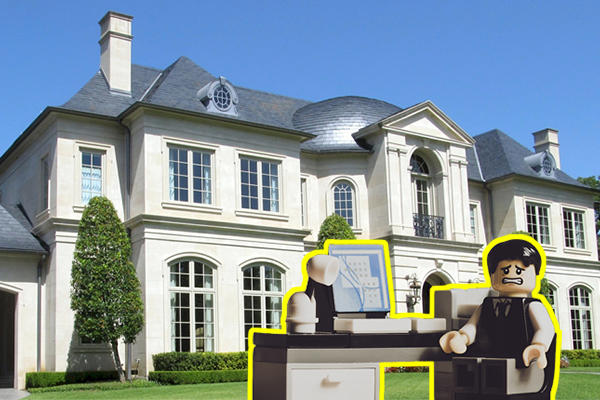Older owners of large homes throughout the Sunbelt are struggling to sell them.
Many baby boomers spent heavily to retire in jumbo-size houses in such Sunbelt states as Arizona, Florida and South Carolina. But as these sprawling houses cease to meet the needs of their aging owners, finding buyers has become problematic.
Since the early 2000s, buyers increasingly have favored smaller houses with modern designs to large, elaborately detailed houses, and many prefer to live a walkable distance from retail stores rather than in remote locations.
The problem is especially challenging in areas with large populations of retirees. For example, 34 North Carolina homes are listed for sale in Buncombe County with asking prices over $2 million, but buyers have acquired only 17 homes in the county in that price range over the past year, according to Marilyn Wright, an Asheville-based agent at Premier Sotheby’s International Realty.
At the beginning of February, the number of homes listed for sale in the Scottsdale, Arizona, area with asking prices of $3 million or more was 349 – an all-time high, according to a report by Walt Danley Realty. Dub Dellis of Walt Danely told the Wall Street Journal that Scottsdale-area houses built before 2012 are selling at deep discounts to asking prices, and some sellers are settling for less than the cost of building their houses.
In a South Carolina beach community called Kiawah Island, about 225 houses are for sale, which is a three- or four-year supply, according to Pam Harrington, a local real estate agent. She said the houses that are hardest to sell are the largest and most expensive ones.
The problem is likely to intensify in the 2020s as more members of the baby-boom generation reach their 70s and 80s, when death or poor health usually lead to sales of their homes, according to Dowell Myers, co-author of a 2018 report by Fannie Mae, entitled “The Coming Exodus of Older Homeowners.”
Two out of five homes nationwide are owned by baby boomers, or a total of 32 million homes.
In 2009, Ben and Valentina Bethell spent about $3.5 million to build a 7,500-square-foot house in a suburb of Asheville, North Carolina, with a view of the Blue Ridge Mountains. In 2015, the couple decided the house is too big for them, so they listed it for sale with an asking price of $4.495 million, which they have reduced to $3.995 million. They plan to buy a smaller new home nearby.
Robin and David Saltman retired 15 years ago and relocated from New Jersey to Ponte Vedra Beach, Florida, where they built a three-story, five-bedroom house on the ocean for $1.75 million. But rather than stay there until their 80s, the couple sold the 4,200-square-foot house last year for $2.1 million. The Saltmans sold the house to buy another one closer to retail stores and with fewer stairs to climb.
Four years ago, George and Diane Hambleton spent nearly $3 million to build a house on Wadmalaw island in South Carolina, about a 20-minute drive from Charleston. Now, they want to sell the house and move “somewhere smaller where someone’s taking care of everything,” Ms. Hambleton, 74, told the Journal. She said they listed the house for sale for $2.99 million in 2016, later cut the asking price to $1.974 million and probably will end up selling for less than its construction cost. [Wall Street Journal] – Mike Seemuth




